

Although the Broads isn’t known for dramatic mountain peaks or rolling hills, it offers plenty of unique opportunities for photographers to capture the beauty of our natural and built landscapes.
Think golden reeds, iconic windpumps and colourful sunsets reflected in the still waters, plus plenty of unique wildlife to keep the nature photographers busy. If you’re keen to get out there but don’t know where to start, read on for our guide to some of the most popular photo locations to visit in the Broads.
Composition is one of the key elements of making a great photo, so we’ve highlighted locations with captivating focal points, foreground interest and areas that are renowned for their great lighting (when the weather plays ball!)
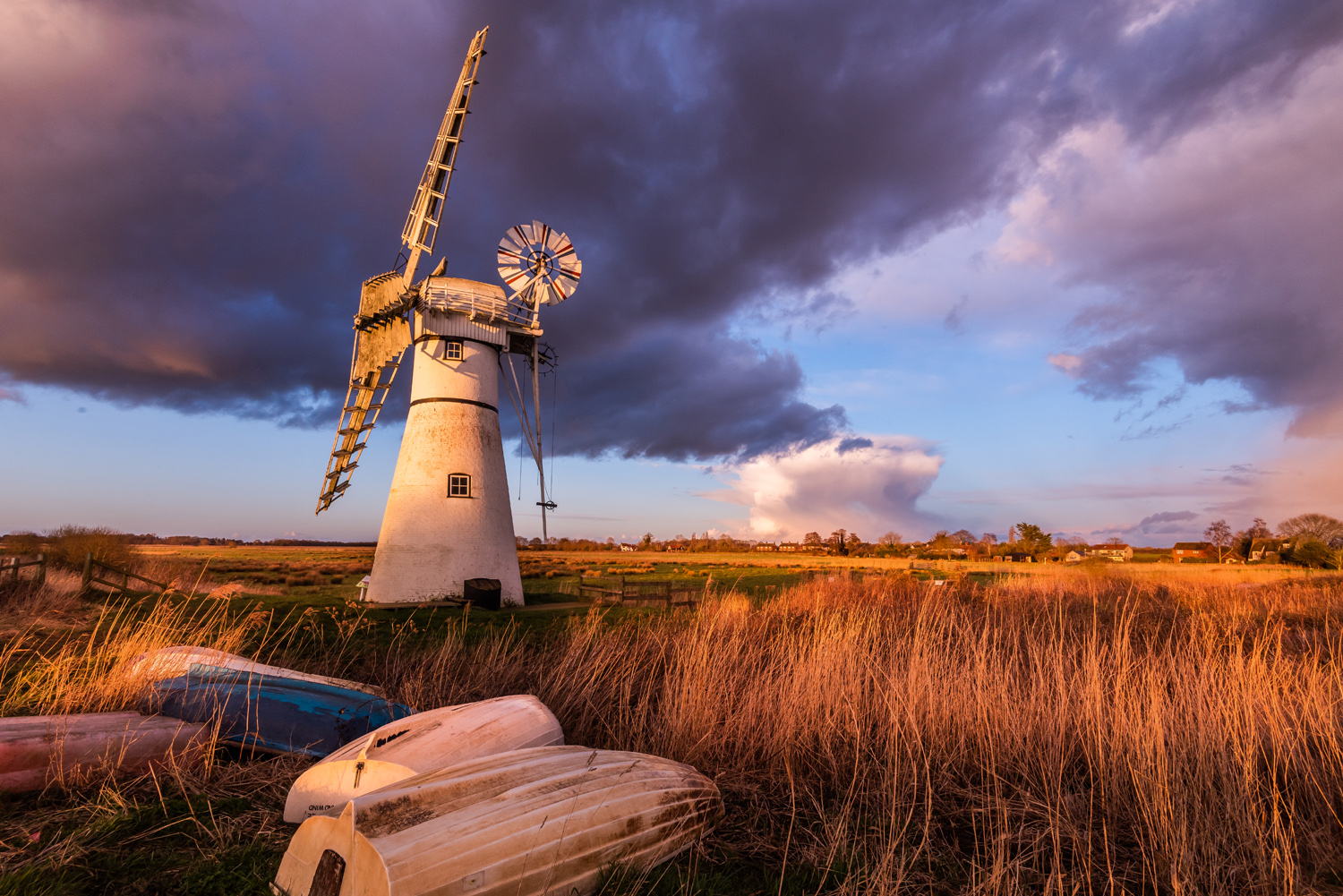
What makes it special: Built in 1820, Thurne Mill with its white‑painted exterior and idyllic surroundings is undoubtedly one of the most popular locations for photographers to visit when they are in the Broads. It has also featured in countless postcards, paintings and other pieces of artwork, and is probably one of the Broads most iconic landscape features.
The mill stands tall above golden reedbeds and looks particularly impressive bathed in golden hour light or against the backdrop of a dramatic sky. From misty winter mornings to dramatic stormy summer days, the mill provides a fantastic focal point at any time of year.
Access by foot is easy from Thurne village, or there is boat mooring at Thurne Dyke.
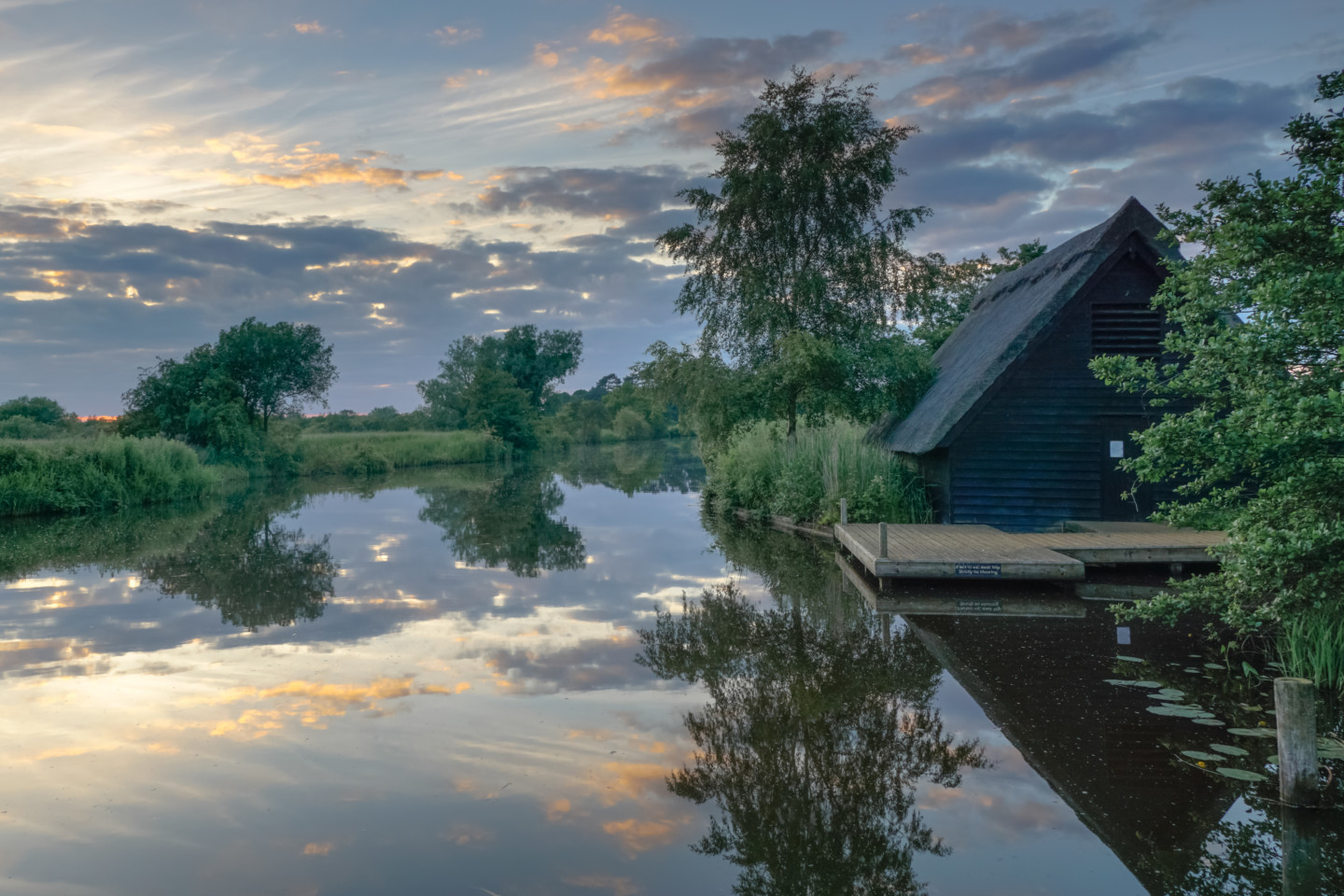
What makes it special: How Hill is another Broads destination that offers something for all photographers. There’s parking on‑site, plus toilets and a tea‑room in summer. For wildlife lovers there’s the Electric Eel boat trip which visits quiet dykes before stopping off at a bird hide.
The How Hill nature trail is also open in the summer months, offering opportunities to photograph dragonflies, butterflies and birds including marsh harriers and wildfowl.
For landscape photographers there’s an abundance of history to capture, including grade‑II listed Turf Fen Mill (a short walk 'left' along the River Ant at How Hill Staithe), the thatched boatshed, the remains of Boardman’s Skeleton Mill and How Hill House itself, once home the Boardman family.
The best time of day to take landscape photos here is definitely sunset, which bathes the mill in attractive light and allows you to capture skies reflected in the still waters of the River Ant. You can also walk to St Benet’s Abbey from here to photograph the ruins of the medieval monastery.
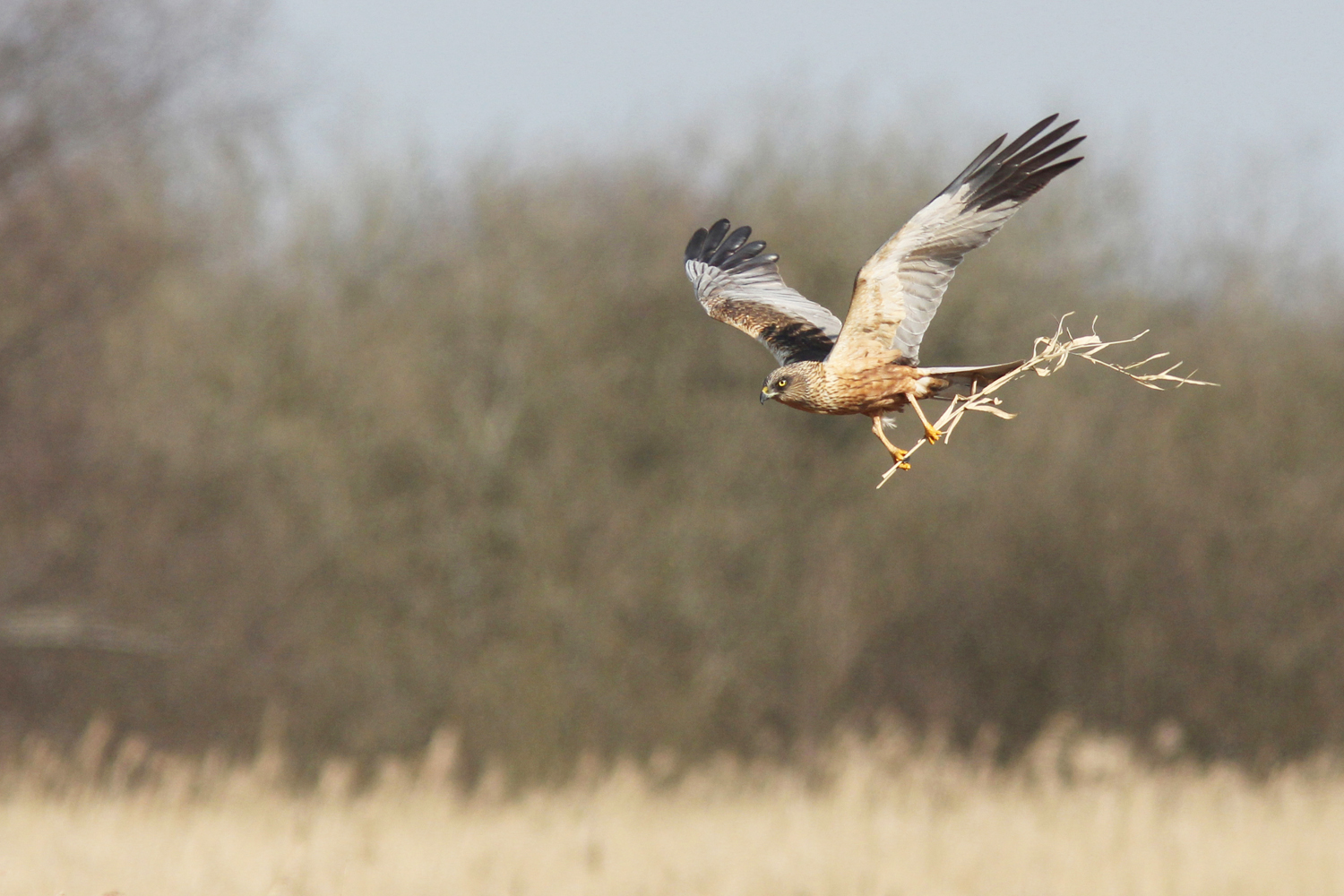
What makes it special: Hickling is one of the finest locations in the Broads for nature photographers to visit, with ample parking and a visitor centre provided by the Norfolk Wildlife Trust. In the drier months you can walk the trails and find an abundance of rare Broads insect species including swallowtail butterflies and Norfolk hawker dragonflies.
It is also a great place to capture the beauty of golden reedbeds, which are particularly magical at dawn or dusk as the mist rises off the water. Amongst the reeds you may be able to find sedge, reed and Cetti’s warblers flitting about, plus bearded reedlings and even bittern if you are lucky.
Stubb Mill viewing point is a great location for nature photographers to capture pictures other impressive species such as common cranes, marsh harriers, owls and other raptors.
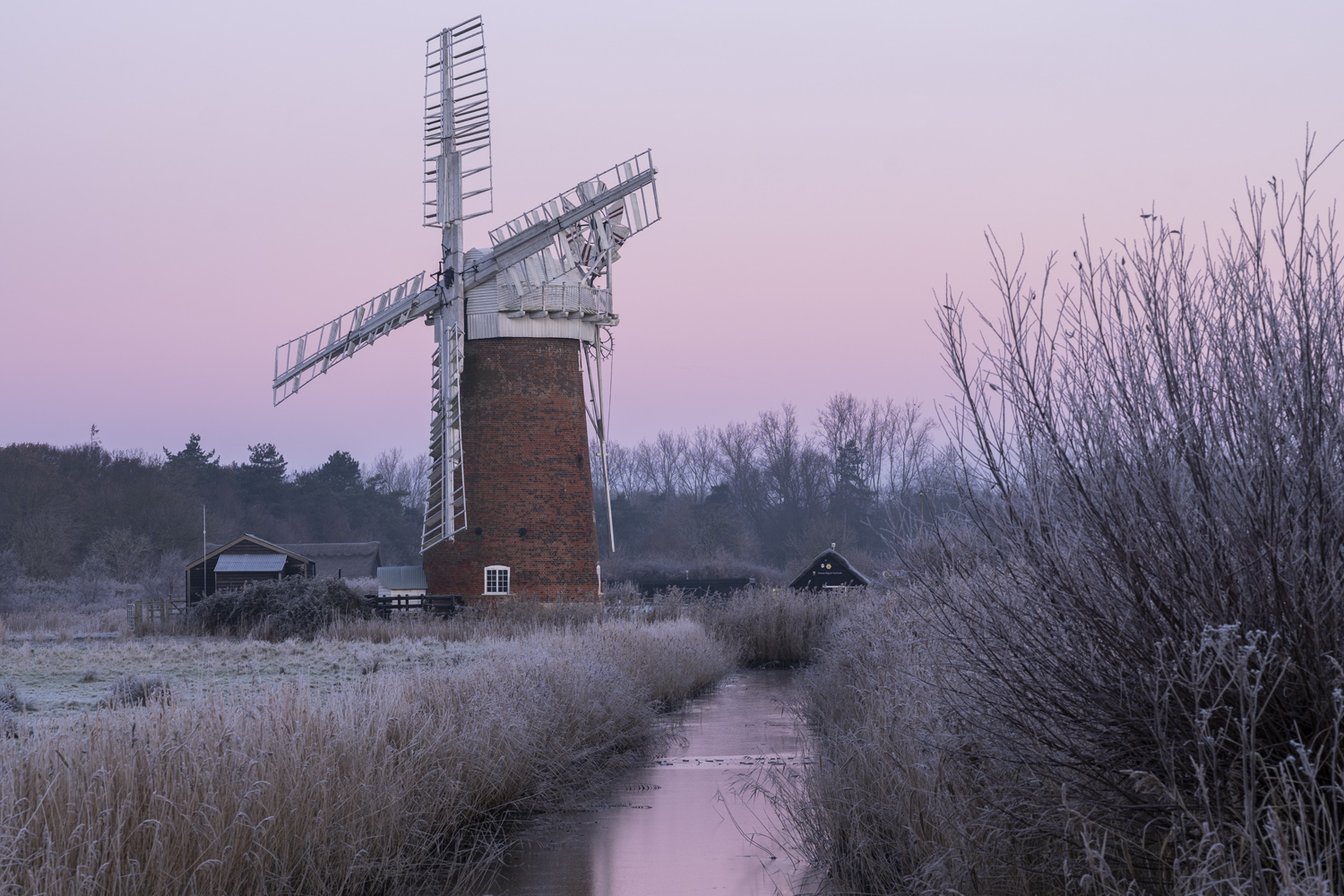
What makes it special: Horsey is one of the better‑known haunts for photographers in the Broads for good reason. The grade‑II listed mill is looked after by the National Trust (who provide parking and a tea‑room on‑site) and is one of the best‑restored windpumps in the Broads area.
Situated at the end of Horsey Dyke, which is often flanked with moored boats, the mill is often bathed in spectacular golden light at the end of a clear day and the skies here can be particularly dramatic owing to its close proximity to the coast.
If visiting during the winter months, it’s also just a short drive to Horsey Dunes which is home to one of the largest colonies of grey seals in East Anglia. The dunes themselves offer an otherworldly environment, but are even more impressive when the seals are in breeding season. Be sure to keep a good distance if visiting to take photographs of them.
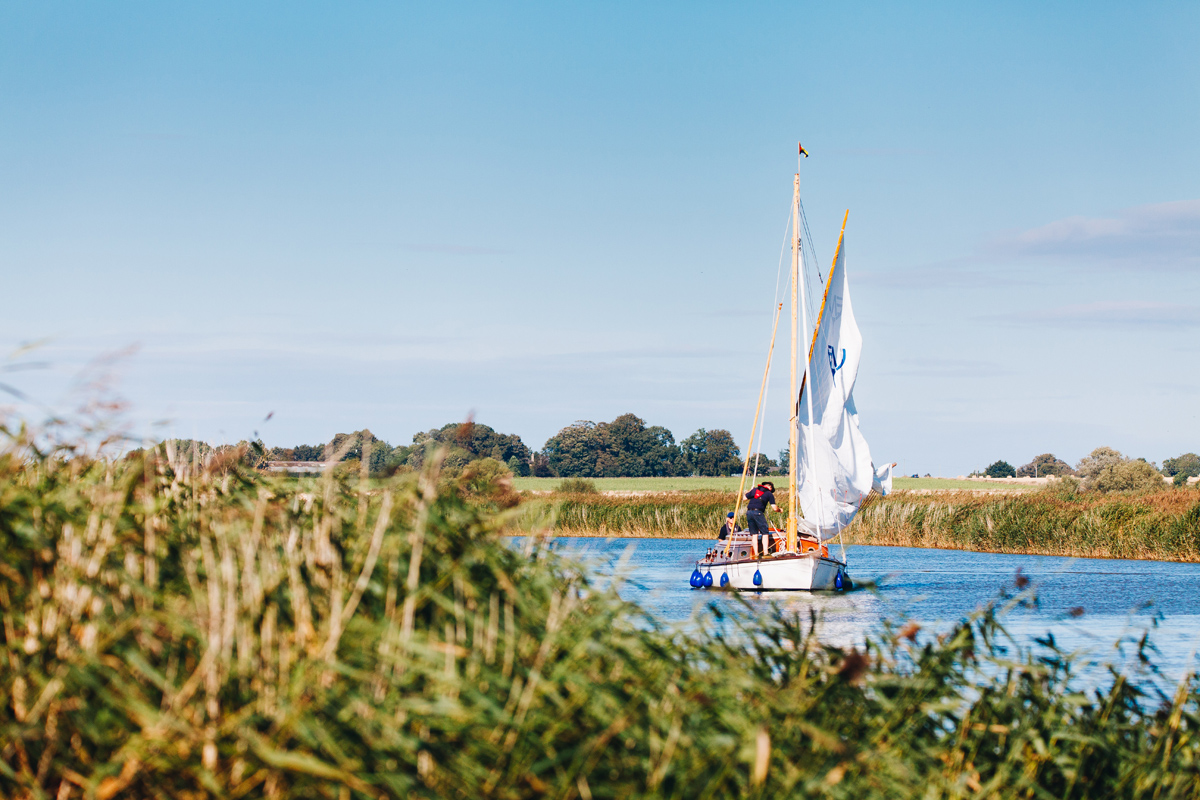
What makes it special: Upton is the home of Broads sailing yard Eastwood Whelpton and is the place to go for opportunities to photograph traditional wooden sailing craft. Upton Dyke often has many attractive boats moored up and is subjected to some lovely light during golden hour.
For nature photographers, the quiet waterways in the area lend themselves well to wildlife‑spotting and we have seen both otters and kingfishers here as well as plenty of dragonflies on previous visits.
If capturing landscape images and heritage is more your thing, the walk from Eastwood Whelpton down the dyke and left along the River Bure leads you past four Broads drainage mills (Palmer’s Mill, Clippesby Mill, Oby Mill and Tall Mill) which provide glimpses into the history of the area.
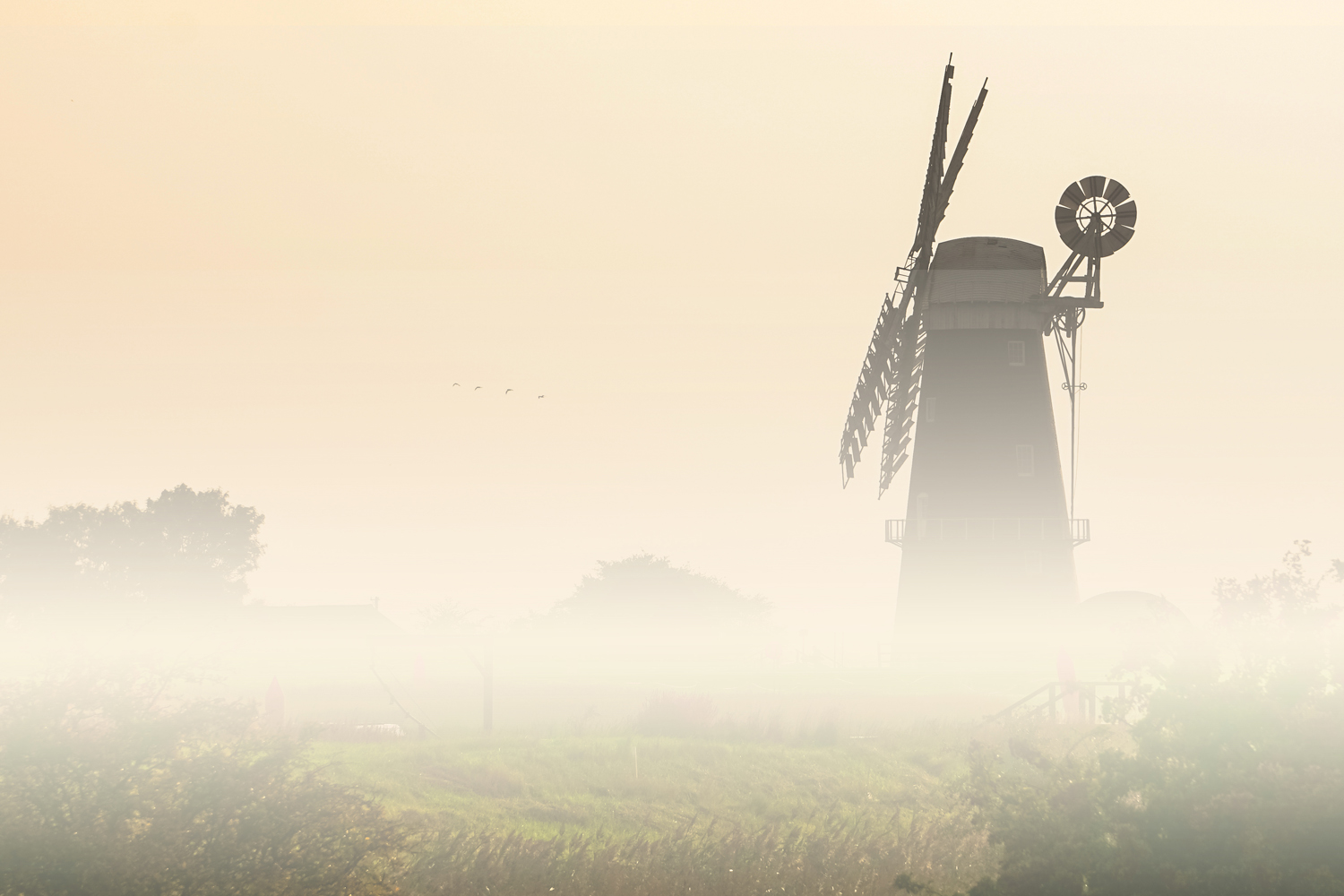
What makes is special: Breydon Water is one of the best locations in East Anglia for seeing migratory birds, particularly so in the winter months where flocks wildfowl and waders (such as pink‑footed geese, Bewick swans, golden plover and lapwings) come to feed. The best time to photograph them is when the tide is low and at sunrise/set when the birds are most active. In the long spring and summer evenings barn owls and marsh harriers can be seen hunting over the reedbed and marshland.
Parking at Saint Peter & Saint Paul Church, you can enjoy views over the reeds and still waters of Berney Arms Reach. One of the main focal points to photography in the area is Berney Arms Mill, which is the tallest mill in the Broads and stands proud amongst the surrounding flat landscape.
Nearby there’s also the fascinating remains of 3rd century Roman ‘Saxon shore fort’ Burgh Castle which is managed by English Heritage. Again there’s panoramic views across Breydon and Berney Arms Mill.
This guide has featured just six of our most popular locations to get you going, but there are many more photogenic locations to explore including the River Waveney at Beccles, Colitshall Common on the River Bure, the peaceful surroundings of Norwich Riverside/Cathedral and even the dunes in the Upper Thurne near Winterton-on-sea.
Why not get out there to find your own favourite location? For more inspiration and stunning photos of the Broads, make sure to follow us on Instagram: @broadsnationalpark